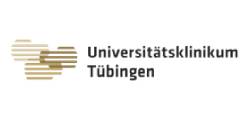Institut de Biotecnologia i de Biomedicina – Universitat Autònoma de Barcelona
The Institut de Biotecnologia i de Biomedicina (IBB) was created in 1970 as a research institute of the Universitat Autònoma de Barcelona (UAB). The institute is devoted to promoting Biotechnology and Biomedicine fields for the last 20 years.
We conduct top-level scientific research with the mission to improve the health and quality of life of the population through the production and dissemination of scientific knowledge. Our researchers participate in high competitive calls, both national and internationally, aimed at funding basic and translational research.
Among the 200 researchers currently working at the IBB, there are lecturers and professors from the UAB, ICREA professors and senior researchers, postdoctoral fellows, and PhD and Master students. The IBB hosts 18 research groups organised into 3 scientific programmes covering different areas that include bioinformatics, cellular and structural biology, genomics, immunology, microbiology and proteomics.
Our multidisciplinary nature is one of the most relevant characteristics of the IBB and allows for a broad approach to biological problems in a vibrant scientific environment. The IBB researchers have expertise in different topics within the biomedicine and the biotechnology field.
Main tasks in the project
The UAB-IBB group is involved in the design and the restrospective validation of a rapid test based on a magneto-actuated biosensor for quantitative assessment of sTREM-1 and Ang-2 at the point of care. The development includes the selection of the best antibody pair for futher immobilization on magnetic particles, and the integration on magneto-actuated immunoassays based on chimioluminiscence readout using firstly as a support 96-wells plates and an external microplate magnet, and a benchtop microplate reader.
Further development involves the integration of the systems in commercial screen-printed electrode with electrochemical readout, using a portable electrochemical reader in combination with an electrochemical reporter, obtaining a preliminary laboratory prototype. Finally, a final laboratory prototype requiring minimal handling and a portable reader is evaluated.













